Art & Tech
French Collective Obvious Has Created an A.I. Art Generator That Can Read Your Mind
The trio's new project explores how A.I., coupled with MRI, can visually reconstruct what's in the mind's eye.

A.I.-generated art today is as accessible as typing a simple prompt into a text-to-image generator. But maybe that’s too many steps. Instead, what if there was no need for a text prompt for an A.I. to generate art? What if the algorithm could simply read our minds and produce images based on whatever we can imagine?
Such are the questions that fuel Obvious’s latest mind-to-image project, for which the French art trio established its own research laboratory, created in collaboration with Sorbonne University and financed by the French National Research Agency. The initiative set out to explore how A.I., coupled with functional Magnetic Resonance Imaging (fMRI) scans, can visually construct or reconstruct what’s in the mind’s eye—and has hit a breakthrough. Its results were published in a scientific paper in April.
Begun in June 2023, the project first set out to replicate existing research, notably Medarc’s MindEye fMRI-to-image model, which retrieves and reconstructs images as seen by individuals. Obvious themselves entered the fMRI machines and observed a series of “artistic” images. Based on their brain activity, these visuals were then algorithmically recreated from a 1,200-image dataset culled from Versatile Diffusion and Midjourney. The results, said the trio in a statement, reached “nearly perfect accuracy.”
“Every time the artist saw a portrait, the algorithms reconstructed a portrait, and likewise for landscapes,” they said.
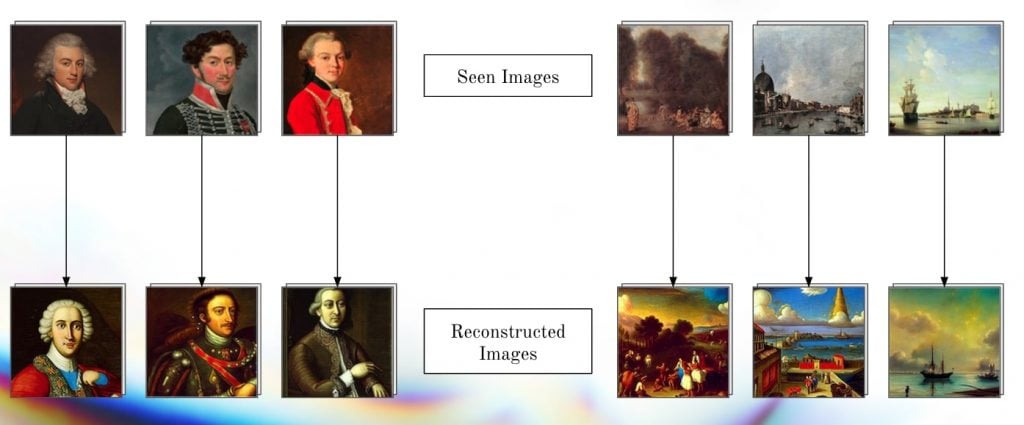
A.I.-generated images reconstructed from a subject’s brain activity. Photo: Obvious.
Not content with reconstruction, Obvious next sought to use the A.I. to generate visuals based solely on imagination.
The subjects were asked to picture a “surrealist” portrait or landscape while in the fMRI machine; in other iterations, they were asked to attach a sentiment to the imagined visuals, such as sadness, love, or surprise. The images were also verbally described to researchers for verification. According to the team, the A.I. successfully recreated elements of the pictured image nine times out of 10.
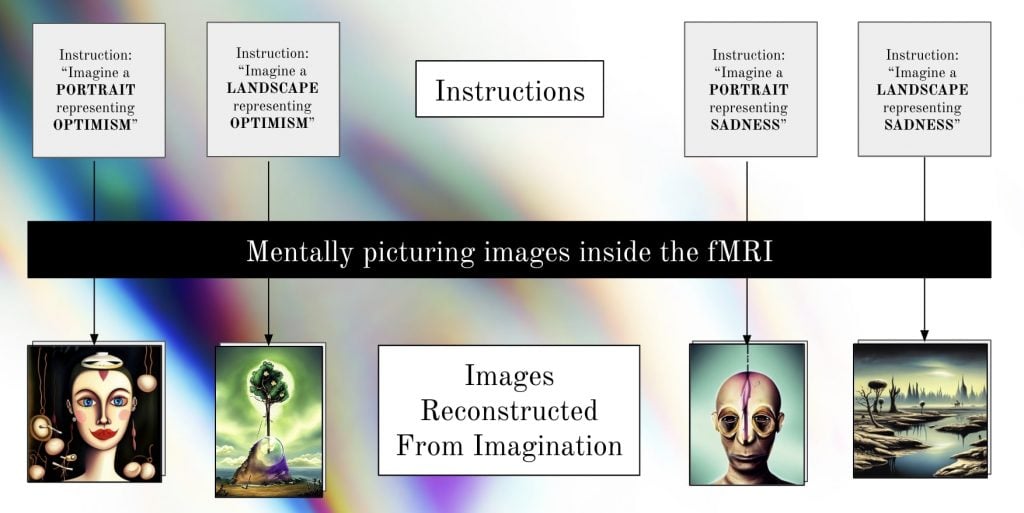
A.I.-generated images based on a subject’s imagination. Photo: Obvious.
The same result also applied to cases when the subjects were told to recall an existing image. When the A.I. output was compared to the existing source, the group found the outcome to be “close to what the subject was imagining,” according to quantitative metrics used in the field.
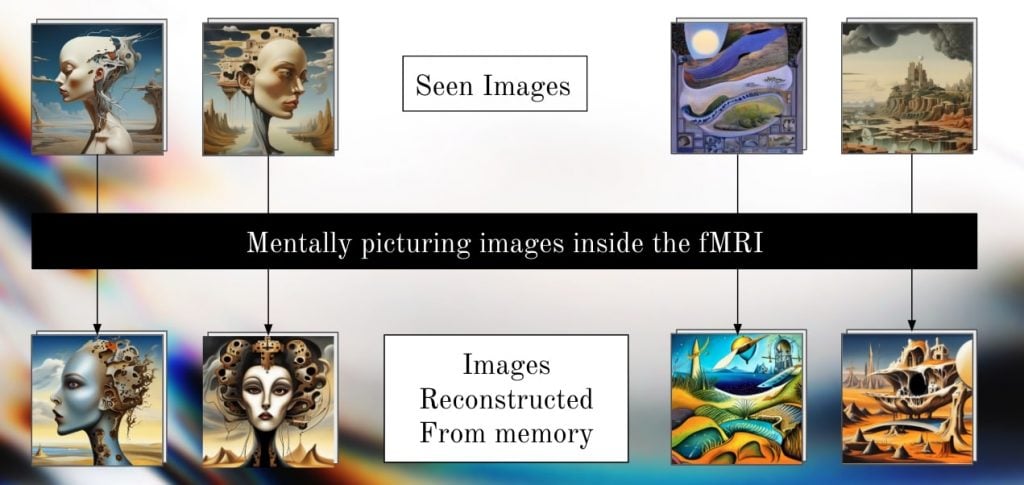
A.I.-generated images based on a subject’s recollection. Photo: Obvious.
To the collective, this mind-to-image approach finds its closest artistic kin in Surrealism, which, since the 20th century, has mined creativity from the subconscious. Or, as André Breton set out in his 1924 Manifesto of Surrealism: “I believe in the future resolution of these two states, dream and reality, which are seemingly so contradictory, into a kind of absolute reality, a surreality.”
“To us,” Obvious explained over email, “this new way of creation allows for a next step in surrealism, with the creation of images directly from one’s mind. This project paves a way for artists to ultimately picture directly what they have in their mind, and to share it with art enthusiasts.”
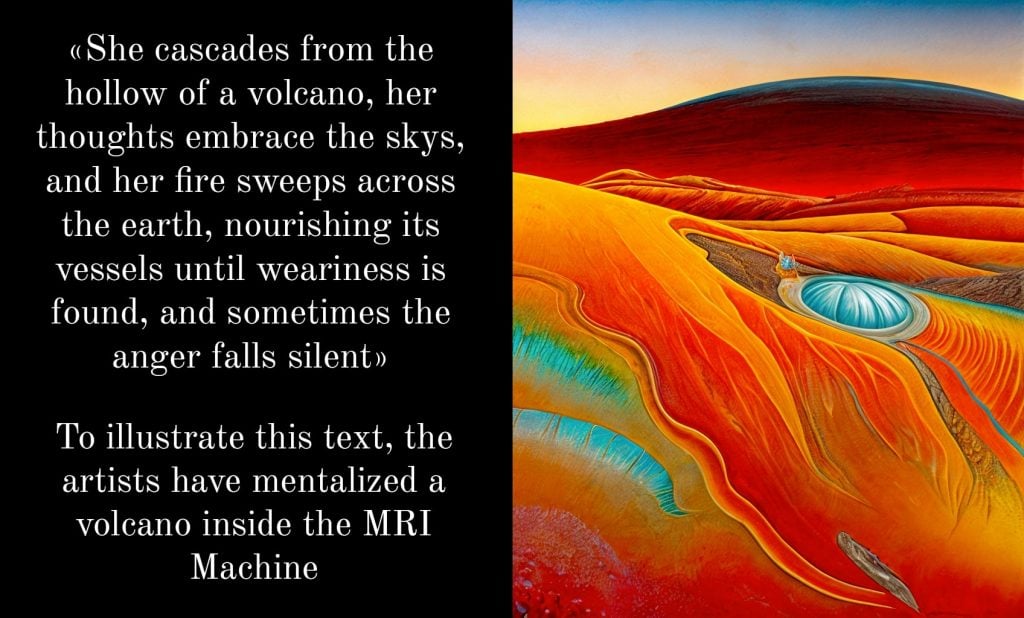
An image generated by A.I. from an artist’s imagining of a volcano, described in text form on the left. Photo: Obvious.
The trio has even penned a manifesto for what it terms “Neo-Surrealism,” defined as a “revolution [stemming] from the fusion between the human mind and artificial intelligence algorithms, capable of transcending the boundaries of our consciousness.” The pronouncement concludes with a rallying cry for artists and scientists to “explore the confines of our minds, unleash our limitless creative potential, and shape a future where art and technology intertwine to reveal the true essence of humanity.”
One can get a glimpse into this Neo-Surrealist future at Danysz Gallery in Paris in October, where the group will exhibit its mind-to-image artworks (there are plans for the exhibition to reach New York and Dubai). “The show will revolve around the question of technology, and more particularly A.I. algorithms, and how they allow the appearance of a new step for the Surrealist movement,” they said.
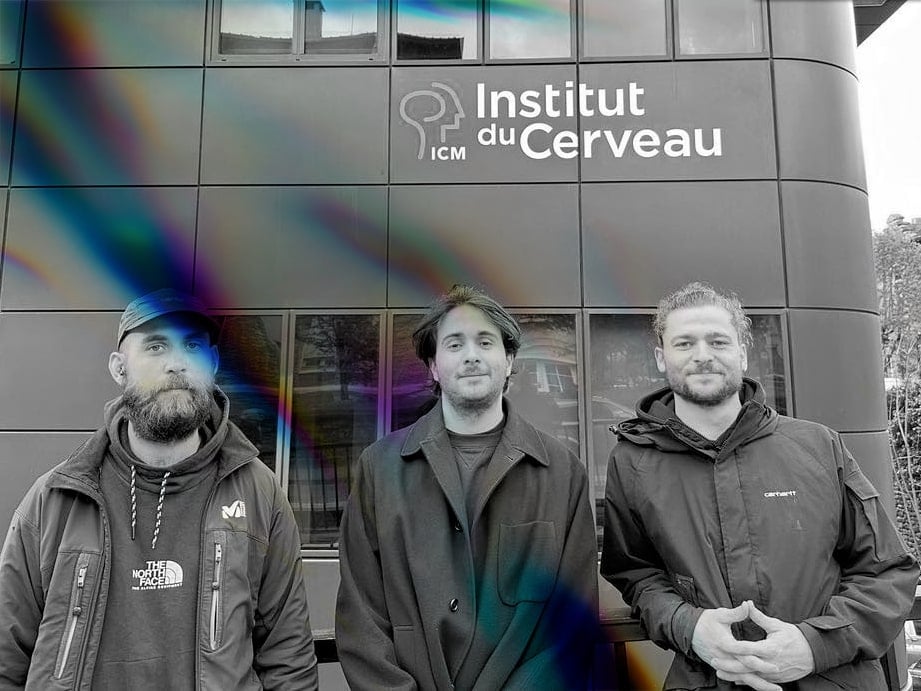
Obvious. Photo: Obvious.
Obvious—best known for being the first to sell an A.I.-generated work at auction in 2018—is not unaware of the pitfalls that might come with such technology. Just as A.I. generators have raised questions about authorship and ownership, so too such an algorithmic leap might have implications for data privacy and consent. This mind-to-image A.I., they realize, blurs the bounds between private and public thoughts.
“What does it mean for the sanctity of personal thoughts if they can be visualized and shared?” they wrote in a statement. “As we venture into this new era of technological capability, we must navigate these complex issues, ensuring that innovation is balanced with ethical considerations and respect for individual autonomy.”
The jury is still out on how such technology might be used (or misused). For now, the collective’s hope is simply to spark a conversation on its transformative potential, creative or otherwise. It’s a field they plan to continue exploring in the years to come.
“Through this endeavor in the art sphere, we wish to open a debate on the more global applications there could be with this technology,” they said, “as we believe it could go as far as changing the way we communicate entirely.”





